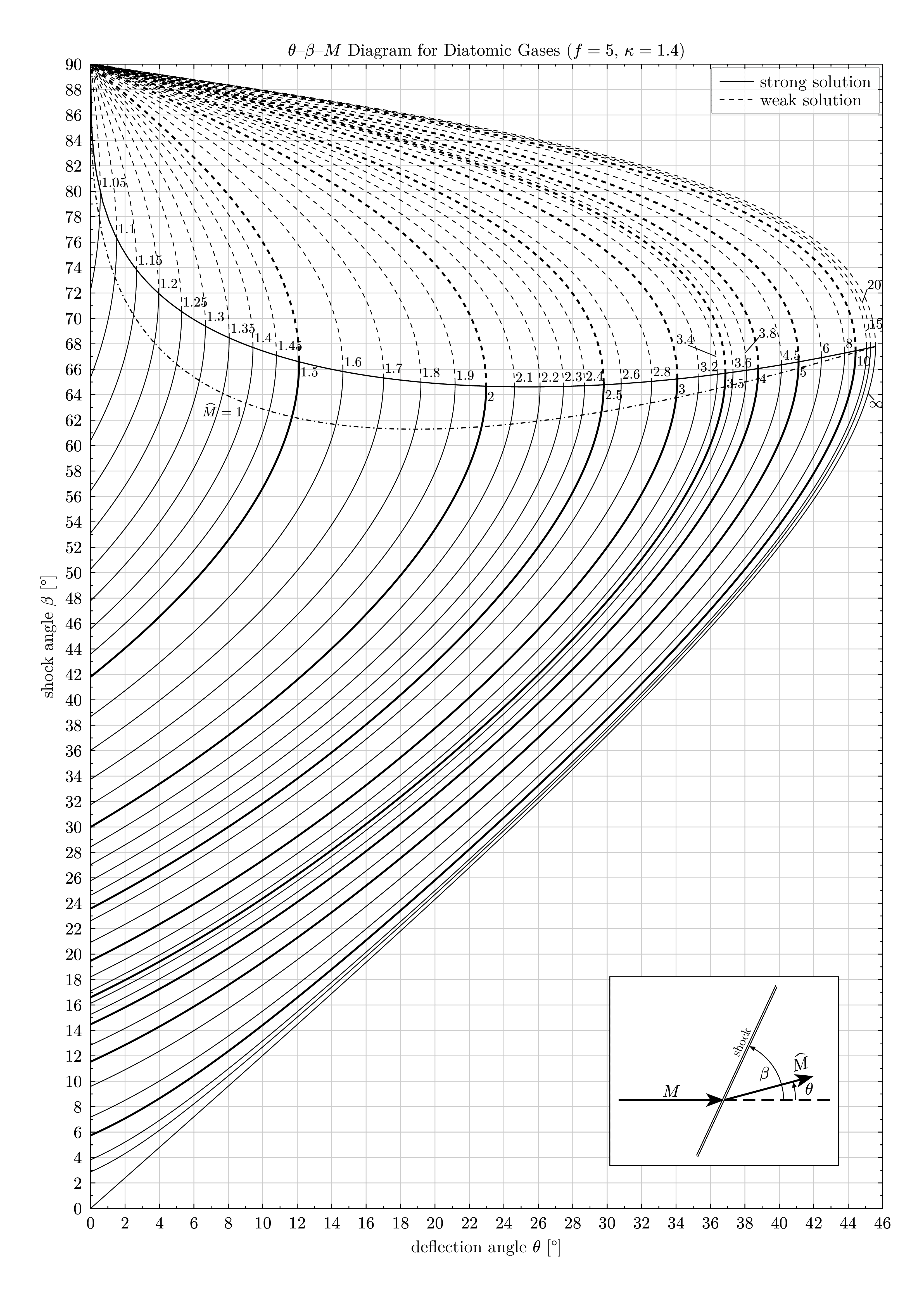θ-β-M Diagram
Creator: Philipp Dobler (original)
In supersonic flow shock waves can occur due to small disturbances of the flow. A θ-β-M Diagram shows the relations between the deflection angle θ, the shock angle β and the Mach number M for an oblique shock.

Download
Code
theta-beta-m-diagram.typ (368 lines)